They don’t call it the Discovery Stage for nothing. It’s where bold threads turn heads, and leaders from across tech and innovation come together to unzip a more sustainable future. But what does that future look like in an industry defined by reinvention and built on trends?
Closing the loop on the fashion industry’s wasteful past, and taking the voluntary leap towards real accountability requires more than a good yarn—it demands action. So are fashion brands ready to wear their values? Or is ‘sustainability’ a buzzword destined to fade away quicker than last season’s ‘must-have’?
For these Certified B Corporations—the verdict is in, and it’s an unequivocal no; sustainability is not a fad, it’s here for good. In fact, the fashion industry is undergoing its biggest top-to-tail transformation in generations, with transparency at its core.
Let’s hear more of what B Corps—Banish, Clothing The Gaps, R.M.Williams, and The Sussan Group—had to say about the state of sustainability in fashion at SXSW Sydney 2024.
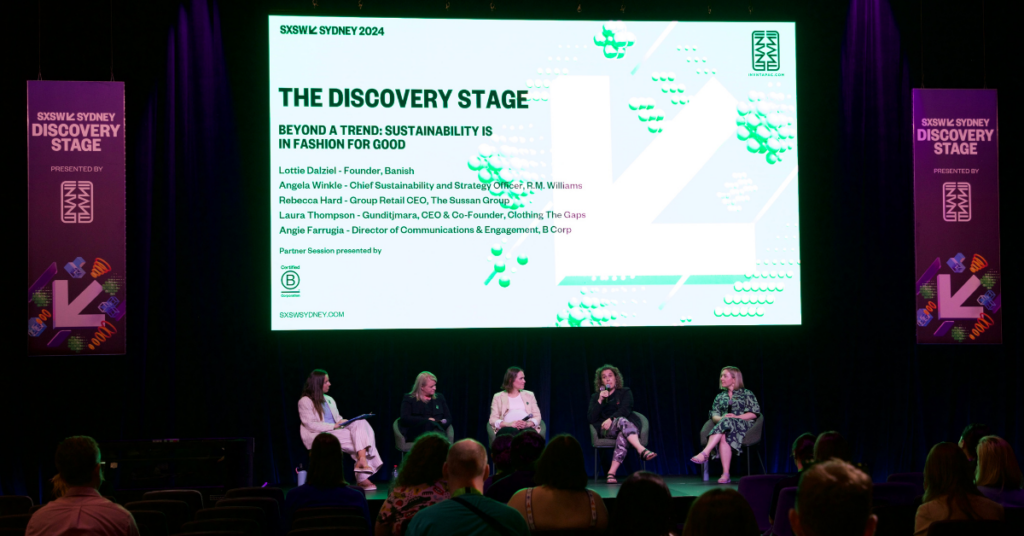
Image: INVNT Group
The runway reckoning
Fashion, as an industry, has been notoriously opaque; rife with untraceable and often unethical supply chains, and a staggering carbon footprint. And yet, right now, the fashion industry has been steadily undergoing its biggest transformation in generations.
Opening the panel in typical bold B Corp-style, moderator Lottie Dalziel, founder of waste reduction education platform, Banish, declared:
“Fashion is no longer just about trends and aesthetics; it’s about responsibility, ethics, and innovation. This global shift towards more sustainable practices is not only changing the way that clothes are made, but also the way that consumers are shopping today.”
— Lottie Dalziel, Banish
Heeding the industry-wide wake-up call for brands and buyers alike, panellists were quick to agree that sustainability is neither a buzzword nor an optional extra—it’s fundamental to the way they do business.
This shift towards greater sustainability in fashion has made it abundantly clear that what we wear, who we buy from and how we shop has an impact far beyond our style cred and our bank balance. So what does this look like across the industry?

Image: INVNT Group
The future of fashion is circular, and…
If we heard it once, we heard it a hundred times at SXSW Sydney 2024: the future is circular. But what does that actually mean?
Circularity in fashion is all about designing goods that go the distance. It’s about keeping materials in play for as long as possible, cutting down on waste and reducing the need for ‘new’. More than the logistics of creating items that last, circularity requires a mindset shift from the prevailing capitalist and colonialist ‘take, make, throw away’ towards a system where resources are reused, repurposed and recirculated.
For Rebecca Hard, Group Retail CEO from The Sussan Group, this moral and environmental imperative towards circular design must be driven by the fashion industry itself:
“The notion of product stewardship is really about how we actually take responsibility. So for us at The Sussan Group, we bring garments into this country to sell to you as consumers, [so being part of] a product stewardship scheme is us saying that ‘we’re taking ownership for the total life of that garment’. It’s something that we all need to find a solution for, not just leave it for the consumer.”
— Rebecca Hard, The Sussan Group
This responsibility-first philosophy is at the heart of the Seamless Initiative—an Australian Fashion Council-led project aimed at creating a circular clothing industry by 2030, of which many B Corps are members.
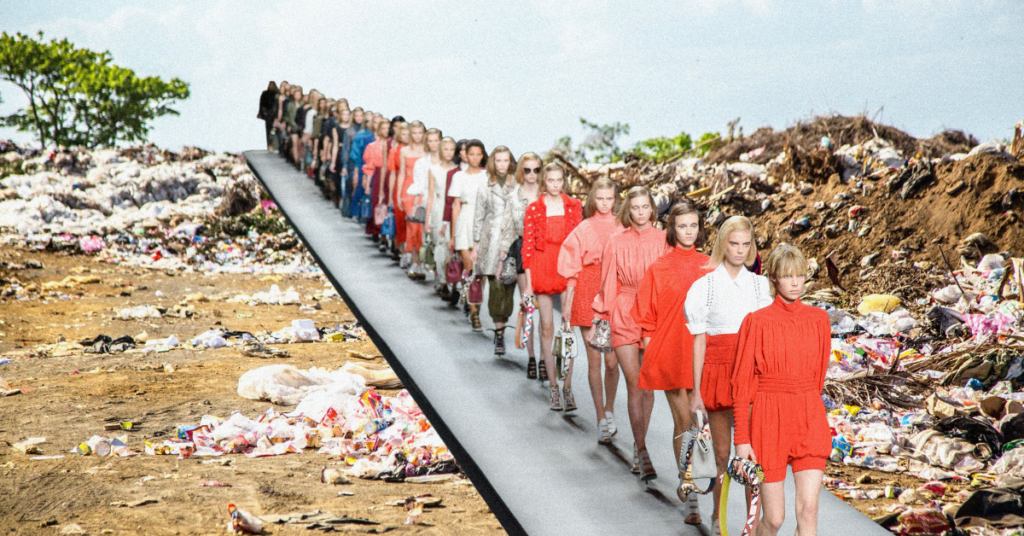
How B Corps are making the future of fashion traceable and transparent ↗
When it comes to taking responsibility for the impact we create, the idea of stewardship—not just ownership—calls for a new kind of relationship between humans and our environment. To achieve this, brands must embrace innovative solutions to help ensure that each garment remains in circulation for as long as possible.
For Angela Winkle, Chief Sustainability and Strategy Officer at R.M.Williams, the commitment to creating repairable, long-lasting products is at the heart of why they do what they do, and at the heart of transforming the future of fashion:
“The way the industry of both apparel and footwear has operated historically is no longer the way we can continue to operate. When we talk about innovating and finding new ways of doing things, a lot of it comes back to traceability and building more ethical supply chains.”
— Angela Winkle, R.M.Williams
Being better custodians
While the conversation threaded through the ins and outs of ‘circular fashion’, panellist and Co-founder of First Nations-owned B Corp Clothing The Gaps, Laura Thompson (Gunditjmara) shared that, while ‘circularity’ is one way to think about where the industry is headed, it’s not the only way.
“Lots of people call it ‘circular fashion’. That’s one way, but I always like to think of it that we’re ‘custodians’ of our clothes; it just really sits well for me. If we think about [ourselves as] custodians, then we’re actually responsible for the way that they’re made, and also the way that they go into their next life, and how they continue to reuse them.”
— Laura Thompson (Gunditjmara), Clothing The Gaps
This mindset shift runs deeper than the typical sustainability narrative. Highlighting the importance of connection and respect, it’s about rethinking how we design, create, and care for every piece we wear, both now and in the future.

Image: Elin Bandmann Photography
A runway of positive social change
We live in a time where our choices are capable of speaking volumes about the kind of world we want to live in. From a Clothing The Gaps ‘Always Was, Always Will Be’ tee to investing in a handcrafted R.M.Williams boot, every item is an opportunity to wear our values and advocate for causes that matter to us.
“We create merchandise with a message, encouraging people to wear their values and spark conversations that support First Nations justice. [Because when] you put on a pin or you put on a T-shirt, you open yourself up. You really, truly, open yourself up.”
— Laura Thompson (Gunditjmara), Clothing The Gaps
As Laura from Clothing The Gaps explained: “when we talk about the power of fashion to create social change…we should look at all brands that we buy from, and we should ask them: ‘What are they doing, as Australian brands, to progress First Nations justice? What are they posting on January 26?’”
In just five years, Clothing The Gaps has fast become a much-loved and iconic streetwear brand that uses its platform to unite people through fashion and a cause. Drawing on 65,000+ years of Indigenous culture and tradition, this is a brand that recognises true sustainability isn’t only about making clothes that last; it’s about fostering a legacy of justice, equity, and community that stands the test of time.
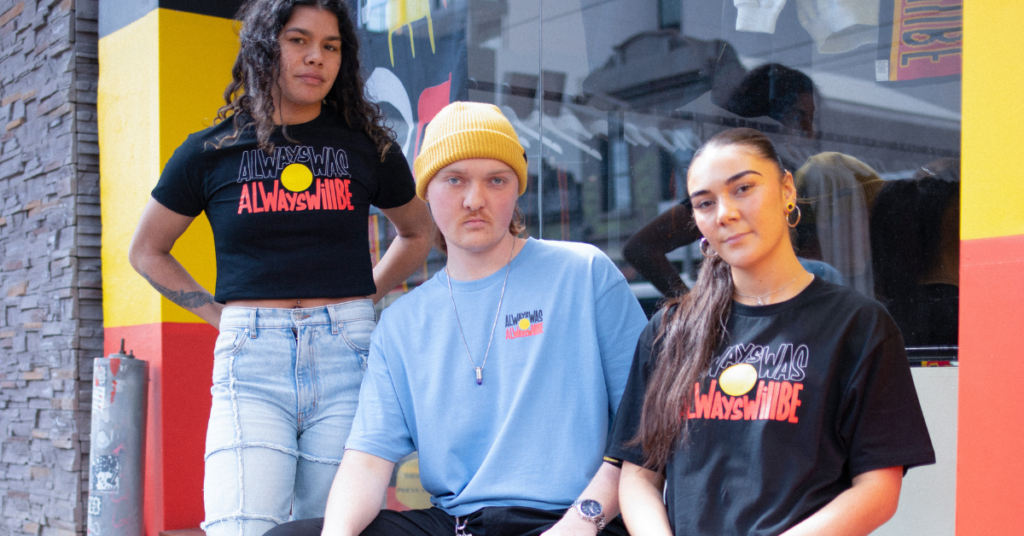
Five things Clothing The Gaps wants you to know about driving social change ↗
Going beyond the eco-vision
When we talk about sustainability in fashion, it goes beyond environmental and ethical practices to ensuring a brand’s long-term social impact.
For heritage brands like R.M.Williams and The Sussan Group, longevity is built into their DNA. Both have been part of our local fashion landscape since 1932 and 1939, respectively, by continuing to find ways to meet people’s needs and stay true to their values.
From balancing the requirements of greater regulation, to understanding where they can have the greatest impact shifting industry and consumer behaviour, Angela from R.M. Williams shared:
“[There is a] balance that brands are having to find between regulation…and changing the way we work to meet those regulations. But then what’s more interesting in sustainability is ‘what we can uniquely do?’, and really leaning into that, and where we can move the needle.”
— Angela Winkle, R.M.Williams
Whether that’s about improving the construction of each garment or piece of footwear, or upgrading repair programs using industry-leading technology, B Corps are continuing to innovate and expand the breadth and depth of their sustainability efforts across all parts of the value chain.

Image: Elin Bandmann Photography
How B Corp Certification boosts impact
As sustainability moves from niche to necessity, certification programs like B Corp are giving brands the tools they need to turn good intentions into verifiable action. More than just a badge—B Corp Certification is a rigorous framework that helps businesses measure their social and environmental impact and hold themselves accountable to high standards.
For those new to the B Corp movement, Director of Communications and Engagement at B Lab Australia and Aotearoa New Zealand (B Lab AANZ) and panellist, Angie Farrugia explained:
“Certified B Corporations are businesses that step up to be accountable for their impact on people and planet. B Lab verifies them for meeting high standards of environmental and social performance, creating trust with consumers who are demanding more transparency.”
— Angie Farrugia, B Lab AANZ
For buyers, the ‘B’ logo has increasingly become a shorthand for ‘business doing good’, providing a stamp of certainty that can otherwise be difficult to discern in a crowded marketplace. And because it’s not just a one-time achievement; it’s a commitment to continuous improvement renewed every three years—being a B Corp is akin to a stamp of credibility increasingly recognised by consumers concerned about greenwashing.
“For businesses, [B Corp Certification] really provides a framework for verifying the work that you’re doing. But most importantly, it’s a commitment to improving and doing the work to be better. So it’s being willing to stand up and be accountable. And for consumers, or people like us, when we’re trying to figure out what’s a good choice to make and where our money goes, when you see the ‘B’…it helps you choose well and be [more] conscious of any choices.”
— Angie Farrugia, B Lab AANZ
Speaking as the ‘newest B on the block’, Rebecca Hard from The Sussan Group shared that B Corp Certification not only provided a framework for improvement but gave the business a tangible way to communicate their commitment to conscious consumers:
“It’s always been part of our DNA, social and community impact, but we’ve never really done a great job talking about it…we just do a lot of things behind the scenes. Now we’re forcing ourselves to talk about it more…it’s been a really important recognition of all the incredible work [the team] do, and they’re just really, really proud.”
— Rebecca Hard, The Sussan Group
Having recently put up a job ad to recruit for a new Sportsgirl store, Rebecca added that: “600 people applied because we have B Corp Certification. We’ve never seen anything like that”. Evidence that B Corp Certification doesn’t just tick a box—it connects brands with conscious consumers, and conscious employees, who demand more than lip service.
As sustainability ‘proof’ becomes non-negotiable, especially in industries with a poor track record acting with integrity for people and planet, the B Corp logo is helping signal that a brand is walking the talk and committed to doing better, every single day.
“What we’re asking of our suppliers is more, but we’re also investing in those relationships. Collaboration throughout the supply chain is key to ensuring we uphold the highest standards.”
— Angela Winkle, R.M.Williams

Why B Corps’ radical transparency is the antidote to greenwashing ↗
Collaboration couture: why trust is a must
From low-carbon sneakers to turning discarded fishing nets into hat brims, the fashion industry is known for its iconic collaborations—Patagonia x Bureo, Allbirds x Adidas, Eileen Fisher x West Elm.
B Corps are no stranger to the power of collective action or working together for a common cause, with Lottie Dalziel noting that: “Collaboration is key; it’s not one individual group that is going to solve this issue. We all collectively should be working together.”
And while there are certainly many exciting things happening ‘Behind the B’, when it comes time to go public with your partnership, the collaboration stakes can often feel higher for businesses whose reputations rest on values and authenticity. As Laura Thompson puts it: “Sometimes you might get an opportunity to partner with a brand, but reputation is everything, and authenticity is everything. A bad collaboration, especially for Clothing The Gaps, would affect the longevity of the brand.”
Pointing out that not everything has to be a collaboration—for brands on the brink of formalising a partnership—panellists shared the importance of building a robust relationship capable of withstanding any issues that might arise. From her perspective, Rebecca Hard from The Sussan Group added that, as brands and B Corps:
“Trust is something you actually have to earn. You can’t expect it. If you actually get something wrong, you need to admit it. You need to work out what went wrong, why it went wrong, and you need to do your best to make sure it doesn’t happen again.”
— Rebecca Hard, The Sussan Group
In many ways, trust is—and always has been—the currency of doing good business. Building it requires a commitment to radical transparency and delivering on promises time and again with consistent, visible action. This is part and parcel of what it means to be a B Corp.
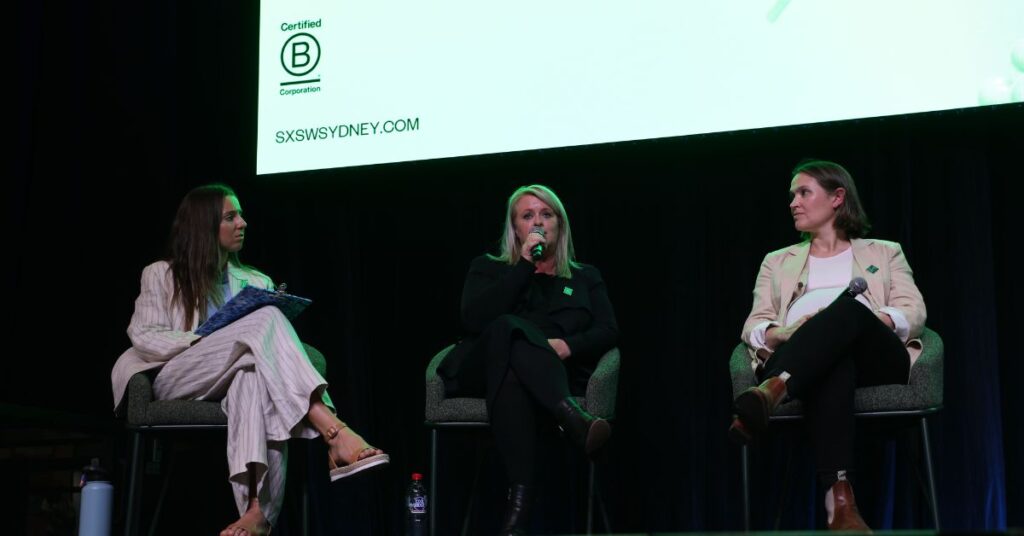
Image: INVNT Group
The expensive elephant in the room
Ok, so someone had to say it. We can’t talk about sustainability in fashion, without mentioning that pretty hefty heifer in the room: cost. And during the session’s Q&A, an audience member put it front and centre on the agenda: “We just heard from another CEO in the fashion industry say, ‘price trumps sustainability’. How do we beat that argument?”
Pricing. It keeps many business owners and operators up at night—especially when consumers often say they’ll pay more for sustainability, yet what they do might suggest otherwise. Despite the best of intentions, what many brands report seeing is customers remaining price conscious, understandably, amidst a cost of living crisis.
Angela from R.M.Williams acknowledged this tension, while still making it clear that sustainability—for brands—is non-negotiable:
“Lots of consumers say they’ll pay more for sustainability, but many don’t, and that’s just the reality. I don’t think that means it doesn’t matter. I think there’s a licence to operate. It’s about producing garments that last, that people can treasure, [then] you do start to build that credibility with consumers, and that’s why they come back. It might not be explicitly because you’re sustainable, it’s because they value you.”
— Angela Winkle, R.M.Williams
For Rebecca at The Sussan Group, the key is making sustainable goods more accessible to all: “Well produced, well-considered, and circular design products should be accessible to everybody. We’re not at a higher end of the price point, so for us, it’s about making sure that everyone can actually access good fashion that’s responsible and sustainable for the environment.”
A central challenge for the industry, it seems, is sewing together sustainability and accessibility, rather than pitting them against each other. And this shift isn’t about passing the buck to consumers either. It’s predicated on businesses taking up the challenge to design and create products that meet people’s budgets and meet our collective responsibility for ethical and eco-friendly practices.
Our times demand a fashion ecosystem that’s truly circular, where choice is moved beyond the binary of what’s good for people and the planet—and what’s not, to a future where fashion is both sustainable and accessible.
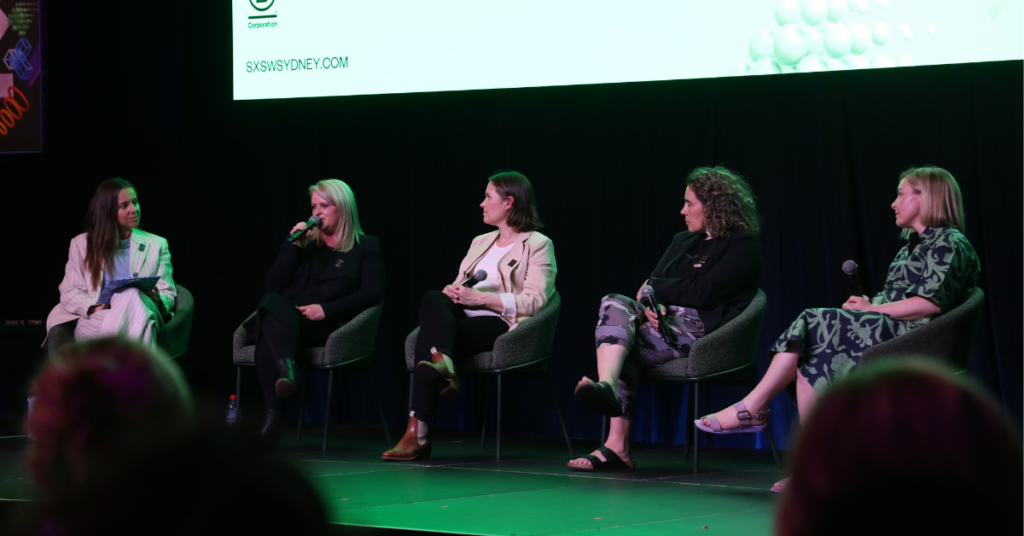
Image: INVNT Group
Balancing Sales ⚖ Sustainability
And finally, the panel tackled one of the biggest challenges conscious brands face in the current capitalist system: balancing the need to drive revenue without promoting over-consumption. It’s a tricky line to walk, especially during sales-heavy periods like Black Friday, End of Financial Year (EOFY) or Boxing Day.
Rather than buy-in to the frenzy, many B Corp brands are turning these moments into opportunities for education. Instead of encouraging mindless shopping, they’re focusing on building products that are made to last.
“Our case is a little bit different in that we don’t do big sales. But what we try to think about is: if we are participating, in any moment, what is our purpose in doing that? And is it an opportunity to be building more of a relationship with the customer?”
— Angela Winkle, R.M.Williams
Turning the typical retail narrative on its head, using these marquee moments not just to push sales but to educate, B Corps are engaging with their audiences around the importance of buying better and more thoughtfully. As we head into the retail-heavy holiday season, Angie from B Lab AANZ added:
“Sales and promotions are moments of heightened awareness and potentially give people access to brands they may not otherwise have access to, which is a great opportunity. It’s important to remember as well that profit fuels impact and purpose. So while there’s a commercial need for businesses to make money, when you are generating profit, you have more capacity to reinvest in impact.”
—Angie Farrugia, B Lab AANZ
Speaking to their experience at Clothing The Gaps, Laura reflected that:
“People don’t really see us as a brand that they necessarily want to buy on sale, but everyone loves a discount! So, for us, we think: ‘Okay, what’s the educational moment in that?’ What we’re pushing is ‘Blak Friday’ and then introducing our audience to a whole lot of other Blak brands that they can discover.”
Encouraging us to think about what’s possible if we use these moments for more, Laura added: “Blak businesses are 100 times more likely to employ Indigenous people in their businesses. So literally, help close the gap by buying Blak.” And that’s what wearing your values is all about.
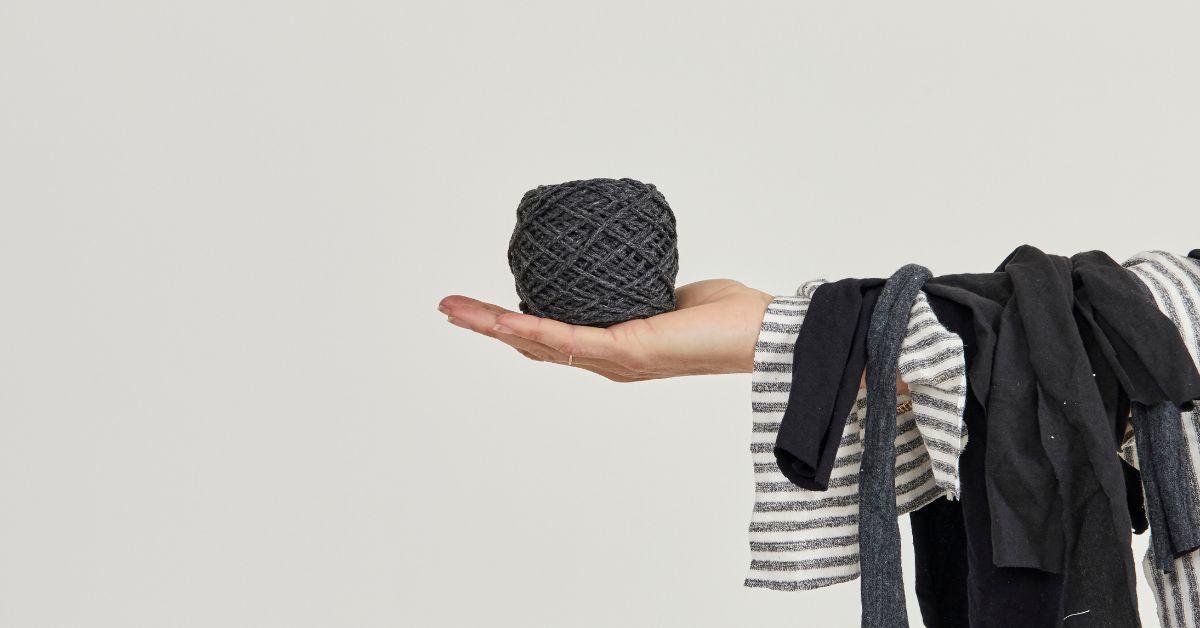
Putting the ‘B’ in Black Friday ↗
Unstitching the status quo
Whether it’s through circular design, boundary-pushing collaborations, or aligning with more ethical values, B Corps are already rewriting the lookbook. They’re not waiting idly by for the industry to catch up—they’re already out there, doing it, and walking the (cat)walk.
But the real question isn’t if fashion can change the world, or whether circularity is the future of the industry—that’s a given. And it’s not even whether or not sustainability in fashion can be both a force for good and an impactful business model—that’s also a fait accompli. Instead, it’s whether or not we—as businesses and as buyers—are truly ready to reinvent what style means and embrace a fashion industry that values transparency more than trends.

Carmen Hawker (she/her) is a copywriter and communications specialist for purpose-driven business and the B Corp movement. She helps brands make waves with impact-driven campaigns and scroll-stopping content, all you gotta do is CARMEN GET IT!

